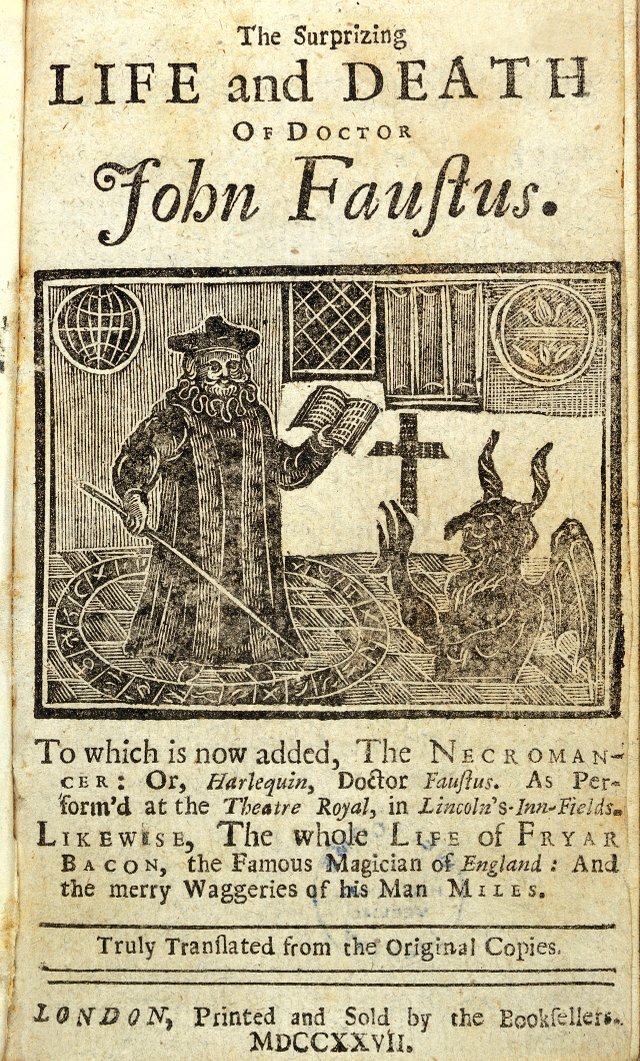I would like also to tell about the male version of witchcraft, which began to gain popularity with the development of education in the Middle Ages.
Necromancy literally means "prediction through the dead." The necromancer called upon the spirit of the dead, learned from him the future, used the dead as a weapon and forced him to tell hidden information.
But since from the Christian point of view, it can be done only with the power of God, then it was decided by teologians those were not the spirits of the dead, but demons came instead of the dead, and forced the necromancers to serve and worship themselves, thereby strengthening their influence on the living world.
Necromancers mostly were clerics, in particular of those orders that were considered at the lowest level of the ecclesiastical hierarchy - the Franciscans and the Dominicans. These men knew Latin and accordingly could communicate with demons. Necromancy can be learned only in books and it was necessary to adhere to the rituals with incredible accuracy to get the result.
In particular, the inquisitor Nicholas Eymerich (the chief inquisitor in the Crown of Aragon expelled later for extreme cruelty) at one time withdrew and publicly burned necromantic textbooks. They mentioned the necromancers as follows - they baptized images and figures, knew the names of demons, mixed these names with the names of angels and saints in prayers, burned carcasses of animals, served demons.
The main elements of necromancy were magic circles, spells and sacrifices.
Documentary sources confirm the faith of the most educated representatives of the medieval society - necromancers, theologians and inquisitors — in sequence of actions or words, incl. and in Christianity there is a clear sequence of words in prayers and rituals.

Image credit
UA
Окремо варто виділити чоловічий варіант чаклунства, який став набирати популярність разом з розвитком освіти за часів Пізднього Середньовіччя.
Некромантія буквально означає «передбачення за допомогою мертвих». Некромант викликав дух мертвого, дізнавався у нього майбутнє, використовував його як зброю і змушував розповідати таємниці.
У зв'язку з тим, що з християнської точки зору це підвладне тільки богу, то теологи вважали, що викликаються не духи померлих, а демони в образі померлих і вони змушували некромантів служити і поклонятися собі, таким чином посилюючи вплив на світ живих.
Некромантами в основному ставали особи духовні, зокрема тих чернечих орденів, які вважалися на нижчому щаблі церковної ієрархії - францисканці і домініканці. Ці чоловіки знали латинь і відповідно могли спілкуватися з демонами. Некромантію можна вивчити тільки в книгах і дотримуватися ритуалів треба було з неймовірною точністю, щоб отримати результат.
Зокрема інквізитор Ніколас Еймерік (головний інквізитор Арагонського королівства, вигнаний за особливу жорстокість) свого часу вилучив і публічно спалив некромантскі підручники. У них згадувалося про некромантів наступне - вони хрестили зображення і фігури, знали імена демонів, змішували ці імена з іменами ангелів і святих в молитвах, спалювали опудала тварин, служили демонам.
Основними елементами некромантіі були магічні кола, заклинання і жертви.
Документальні джерела підтверджують віру найбільш освічених представників середньовічного суспільства - некромантів, теологів і інквізиторів - в силу послідовних дій або слів, в т.ч. і в християнстві спостерігається чітка послідовність слів в молитвах і дотримання ритуалів.
Wait, I never knew that necromancers were actually part of catholic church, that's really interesting! From the depictions in videogames and literature I'd rather guess they were some kind of "local shamans", not a religious person. I'm really curious in which ages was it exactly happening? And do you suggest any good lectures on the topic? Thanks in advance!
Downvoting a post can decrease pending rewards and make it less visible. Common reasons:
Submit
I hope that it could be understood from the text that not all the priests were necromancers )))
But the main reason that they mainly were part of church is education. In the Middle Ages almost nobody could read except for clerics and sometimes nobles. It's just the time when first universities appear in Europe. The rituals were closely connected with knowing Latin.
I make these notes since I'm studying now the course Magic in the Middle Ages by University of Barselona https://www.coursera.org/learn/magic-middle-ages
And the main reason for studying was that everything we think about magic in those times goes from movies and fiction :)
Downvoting a post can decrease pending rewards and make it less visible. Common reasons:
Submit
@OriginalWorks
Downvoting a post can decrease pending rewards and make it less visible. Common reasons:
Submit
The @OriginalWorks bot has determined this post by @limnade to be original material and upvoted(2%) it!
To call @OriginalWorks, simply reply to any post with @originalworks or !originalworks in your message!
Downvoting a post can decrease pending rewards and make it less visible. Common reasons:
Submit